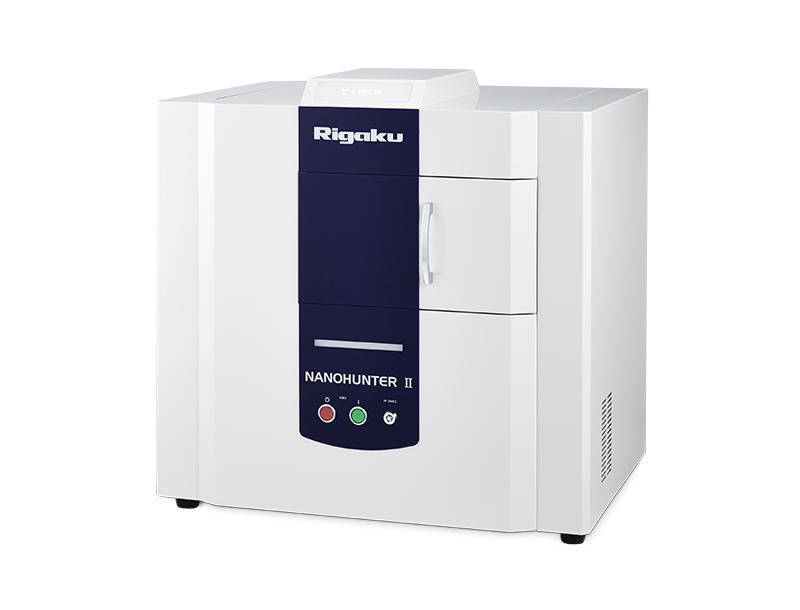NANOHUNTER II
BENCHTOP TOTAL REFLECTION X-RAY FLUORESCENCE (TXRF) SPECTROMETER
Thin film characterisation and rapid trace elemental analysis

Features
- TXRF on a benchtop for ultra-trace analysis.
- Thin film characterisation with GI-XRF capabilities.
- Calculate in parts-per-billion (ppb) increments.
For quick measurements, a 600 W X-ray tube is used. - Detector of silicon drift (SDD).
- Autosampler with 16 positions.
- As, Se, and Cd have high sensitivity.
- It’s ideal for analysing nanoparticles.
- Air, N2*, or He* as an analysis environment.
TXRF for trace element environmental applications
Due to increasingly rigorous environmental laws, a simpler way of conducting elemental analysis for manufacturing waste liquids and effluent streams down to ppb levels is now in demand. Even with a very small sample size, analysis down to the ppb level is achievable with the NANOHUNTERTM II spectrometer by simply adding a drop of liquid to the sample carrier, drying it, and then completing the measurement. Quantitative analyses based on internal standard chemicals are similarly simple to carry out.
Benchtop TXRF with 600 W X-ray tube power
The Rigaku NANOHUNTER II TXRF analyzer combines a completely automatic optical axis adjustment system with a benchtop size factor that enables for quick and trouble-free operation. The NANOHUNTER II TXRF spectrometer has a 16 position autosampler to take advantage of quick measurement durations for high throughput. It has a high-power 600 W X-ray source, a newly built mirror (optic), and a large-area silicon drift detector (SDD).
TXRF principle of operation
When an incident X-ray beam strikes the sample at a shallow angle (below the threshold angle for total X-ray reflection for the substrate), the excitation beam is nearly completely reflected away from the silicon drift detector (SDD). The background contributions in the measured energy dispersive X-ray fluorescence (EDXRF) spectra are drastically decreased as a result. The TXRF approach provides exceptionally high signal-to-noise performance, resulting in ultra-trace elemental measurement sensitivity, by efficiently stimulating the surface elements while nearly removing background noise.
